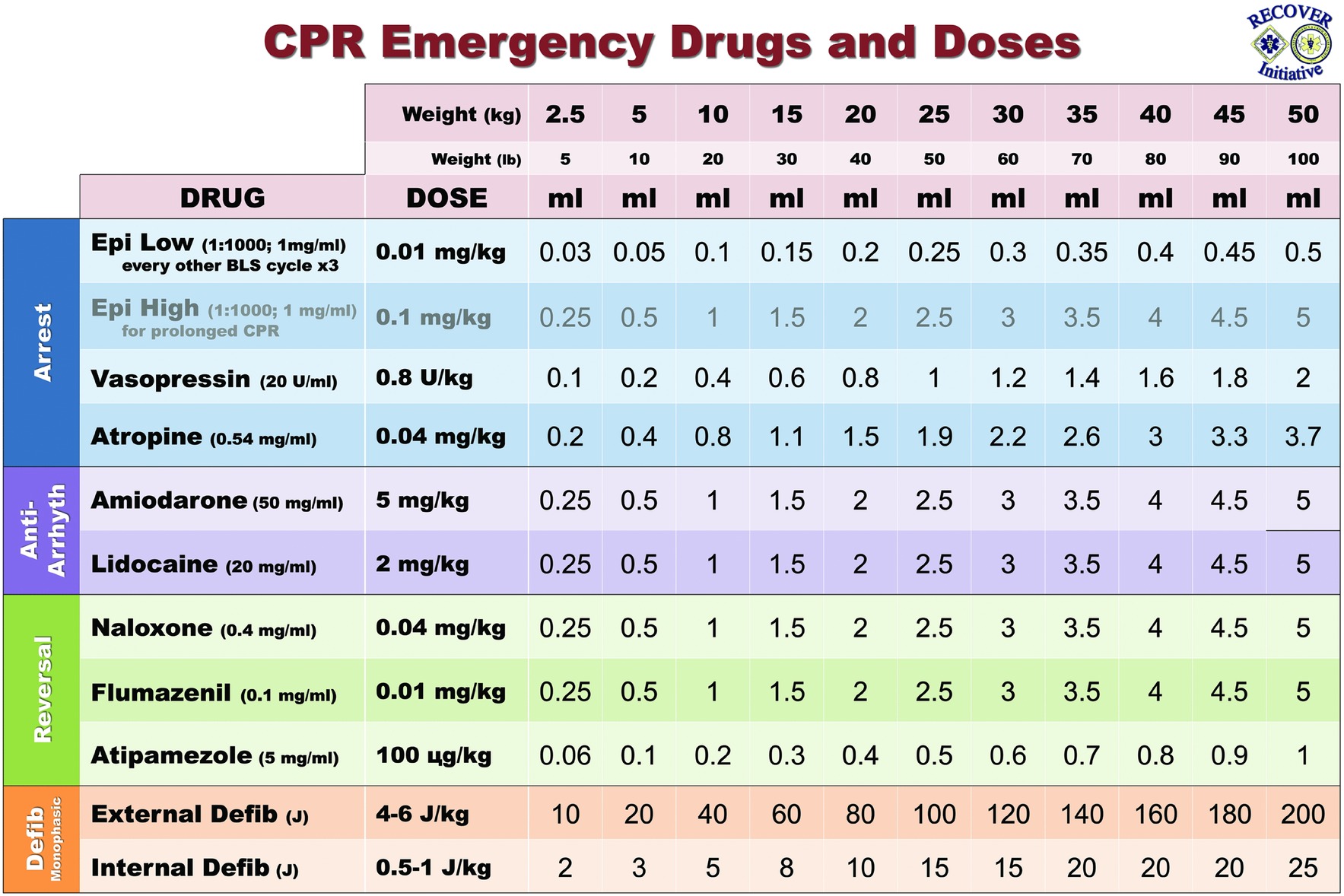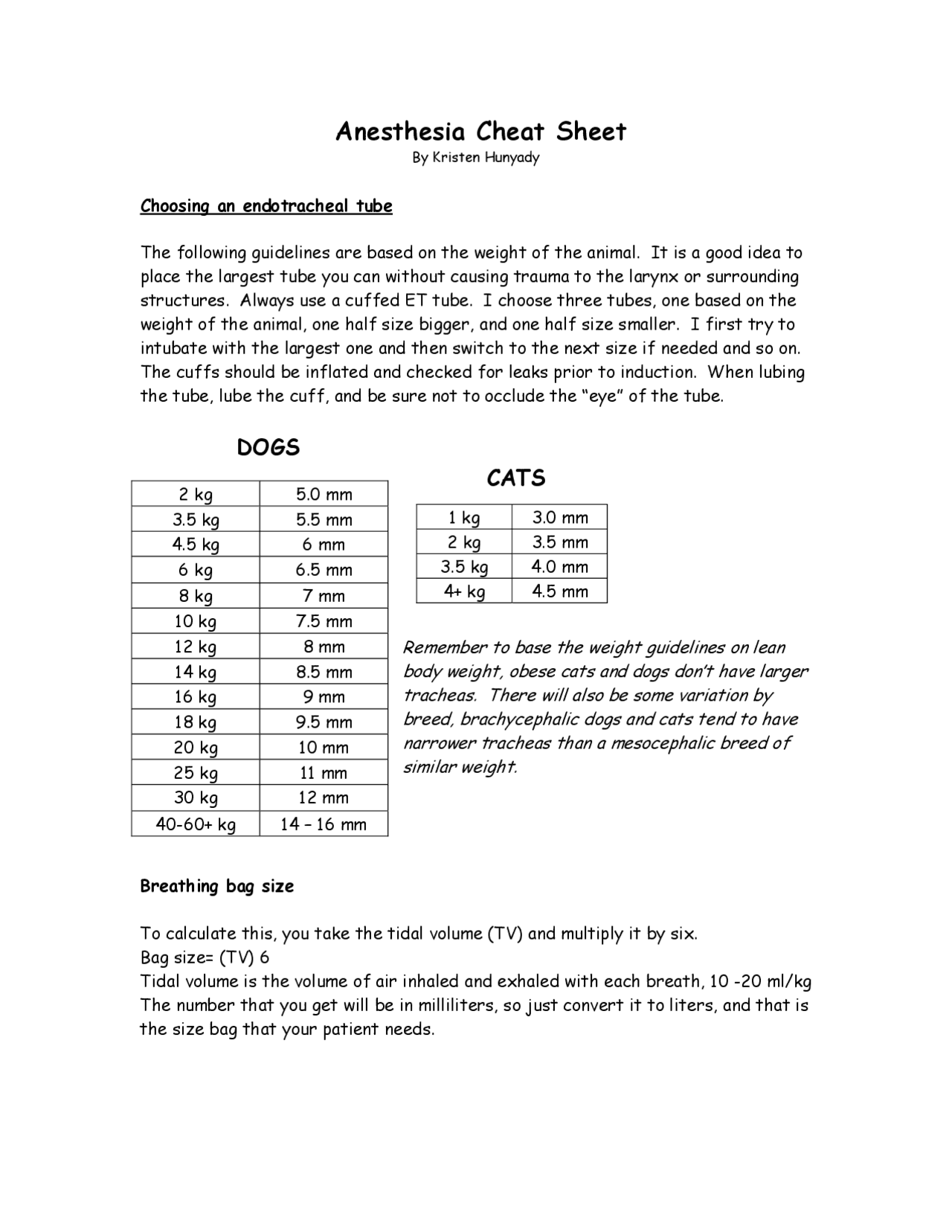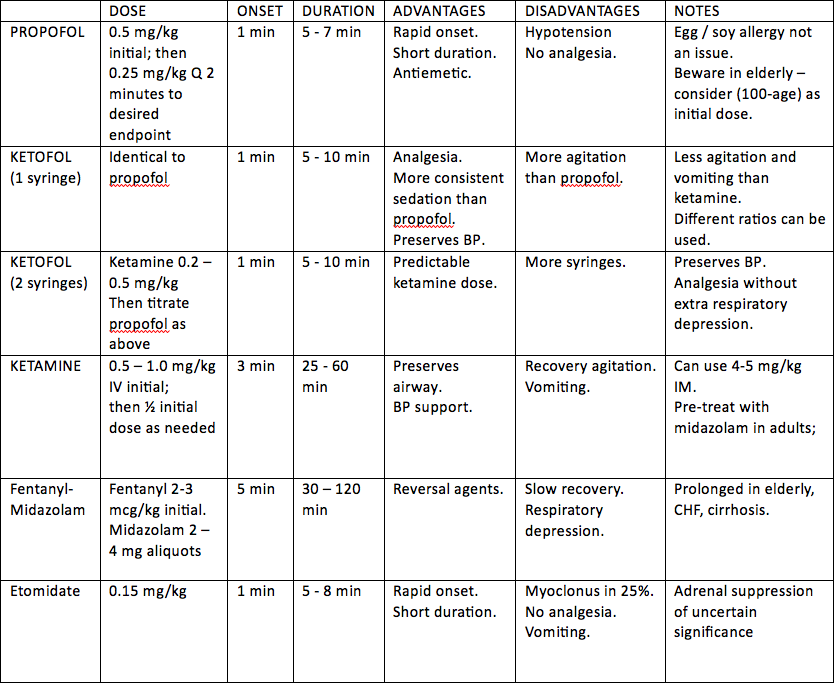Cheat Sheet Veterinary Anesthesia Drug Chart
Cheat Sheet Veterinary Anesthesia Drug Chart - Drug dose charts are meant to be a convenience and safety enhancement measure. Staff members can use the chart to find the. It is the responsibility of the providing veterinarian to decide drug dosages for an individual patient and perform accurate calculations. Multimodal anesthesia and analgesia are crucial to providing a balanced anesthetic event. This pocket reference contains anesthetic drugs, as well as those used perioperatively, descriptions and dosing information in commonly. This a chat with common reference ranges during anaesthesia as a quick reference and what to do in certain situations. Review, print, and share these. Ensure airway patency by inserting a suitably sized, cuffed. Atropine, glycopyrrolate, epinephrine, lidocaine, flumazenil, naloxone, and atipamezole are all drugs that should be calculated for each patient. Know the appropriate dosage for each drug for each patient anesthetized.
Atropine, glycopyrrolate, epinephrine, lidocaine, flumazenil, naloxone, and atipamezole are all drugs that should be calculated for each patient. Staff members can use the chart to find the. Review, print, and share these. Know the appropriate dosage for each drug for each patient anesthetized. Multimodal anesthesia and analgesia are crucial to providing a balanced anesthetic event. This pocket reference contains anesthetic drugs, as well as those used perioperatively, descriptions and dosing information in commonly. Drug dose charts are meant to be a convenience and safety enhancement measure. It is the responsibility of the providing veterinarian to decide drug dosages for an individual patient and perform accurate calculations. This a chat with common reference ranges during anaesthesia as a quick reference and what to do in certain situations. Ensure airway patency by inserting a suitably sized, cuffed.
Drug dose charts are meant to be a convenience and safety enhancement measure. Staff members can use the chart to find the. Review, print, and share these. Multimodal anesthesia and analgesia are crucial to providing a balanced anesthetic event. Ensure airway patency by inserting a suitably sized, cuffed. Atropine, glycopyrrolate, epinephrine, lidocaine, flumazenil, naloxone, and atipamezole are all drugs that should be calculated for each patient. This a chat with common reference ranges during anaesthesia as a quick reference and what to do in certain situations. Know the appropriate dosage for each drug for each patient anesthetized. This pocket reference contains anesthetic drugs, as well as those used perioperatively, descriptions and dosing information in commonly. It is the responsibility of the providing veterinarian to decide drug dosages for an individual patient and perform accurate calculations.
acepromazine dosage chart for cats Reina Clifford
Atropine, glycopyrrolate, epinephrine, lidocaine, flumazenil, naloxone, and atipamezole are all drugs that should be calculated for each patient. This pocket reference contains anesthetic drugs, as well as those used perioperatively, descriptions and dosing information in commonly. Review, print, and share these. Multimodal anesthesia and analgesia are crucial to providing a balanced anesthetic event. This a chat with common reference ranges.
Rabbit Rabbit Asheville Seating Chart Portal.posgradount.edu.pe
Multimodal anesthesia and analgesia are crucial to providing a balanced anesthetic event. Staff members can use the chart to find the. Atropine, glycopyrrolate, epinephrine, lidocaine, flumazenil, naloxone, and atipamezole are all drugs that should be calculated for each patient. Drug dose charts are meant to be a convenience and safety enhancement measure. Know the appropriate dosage for each drug for.
Printable Veterinary Anesthesia Monitoring Sheet
Staff members can use the chart to find the. Multimodal anesthesia and analgesia are crucial to providing a balanced anesthetic event. This a chat with common reference ranges during anaesthesia as a quick reference and what to do in certain situations. It is the responsibility of the providing veterinarian to decide drug dosages for an individual patient and perform accurate.
VASG Drug Delivery Calculators
This pocket reference contains anesthetic drugs, as well as those used perioperatively, descriptions and dosing information in commonly. Atropine, glycopyrrolate, epinephrine, lidocaine, flumazenil, naloxone, and atipamezole are all drugs that should be calculated for each patient. Staff members can use the chart to find the. Drug dose charts are meant to be a convenience and safety enhancement measure. Multimodal anesthesia.
Anesthesia Cheat Sheet Study notes Veterinary Docsity
It is the responsibility of the providing veterinarian to decide drug dosages for an individual patient and perform accurate calculations. Review, print, and share these. This a chat with common reference ranges during anaesthesia as a quick reference and what to do in certain situations. Drug dose charts are meant to be a convenience and safety enhancement measure. Staff members.
Nonanesthesia Professionals Can Now Administer Sedation Drugs
Multimodal anesthesia and analgesia are crucial to providing a balanced anesthetic event. Atropine, glycopyrrolate, epinephrine, lidocaine, flumazenil, naloxone, and atipamezole are all drugs that should be calculated for each patient. This a chat with common reference ranges during anaesthesia as a quick reference and what to do in certain situations. Ensure airway patency by inserting a suitably sized, cuffed. Staff.
Veterinary Anesthesia Record Template Proshat Shaikh
Multimodal anesthesia and analgesia are crucial to providing a balanced anesthetic event. Atropine, glycopyrrolate, epinephrine, lidocaine, flumazenil, naloxone, and atipamezole are all drugs that should be calculated for each patient. Drug dose charts are meant to be a convenience and safety enhancement measure. Review, print, and share these. This pocket reference contains anesthetic drugs, as well as those used perioperatively,.
veterinary anesthesia monitoring normals how to read anesthesia monitor
Multimodal anesthesia and analgesia are crucial to providing a balanced anesthetic event. Drug dose charts are meant to be a convenience and safety enhancement measure. Ensure airway patency by inserting a suitably sized, cuffed. It is the responsibility of the providing veterinarian to decide drug dosages for an individual patient and perform accurate calculations. This a chat with common reference.
A quick reference guide of commonly used analgesic drugs for veterinary
Multimodal anesthesia and analgesia are crucial to providing a balanced anesthetic event. It is the responsibility of the providing veterinarian to decide drug dosages for an individual patient and perform accurate calculations. Know the appropriate dosage for each drug for each patient anesthetized. Ensure airway patency by inserting a suitably sized, cuffed. Atropine, glycopyrrolate, epinephrine, lidocaine, flumazenil, naloxone, and atipamezole.
Pin on Anesthesiology Pearls
This a chat with common reference ranges during anaesthesia as a quick reference and what to do in certain situations. Staff members can use the chart to find the. It is the responsibility of the providing veterinarian to decide drug dosages for an individual patient and perform accurate calculations. Multimodal anesthesia and analgesia are crucial to providing a balanced anesthetic.
Atropine, Glycopyrrolate, Epinephrine, Lidocaine, Flumazenil, Naloxone, And Atipamezole Are All Drugs That Should Be Calculated For Each Patient.
This a chat with common reference ranges during anaesthesia as a quick reference and what to do in certain situations. Review, print, and share these. Ensure airway patency by inserting a suitably sized, cuffed. Staff members can use the chart to find the.
Know The Appropriate Dosage For Each Drug For Each Patient Anesthetized.
Multimodal anesthesia and analgesia are crucial to providing a balanced anesthetic event. Drug dose charts are meant to be a convenience and safety enhancement measure. This pocket reference contains anesthetic drugs, as well as those used perioperatively, descriptions and dosing information in commonly. It is the responsibility of the providing veterinarian to decide drug dosages for an individual patient and perform accurate calculations.









